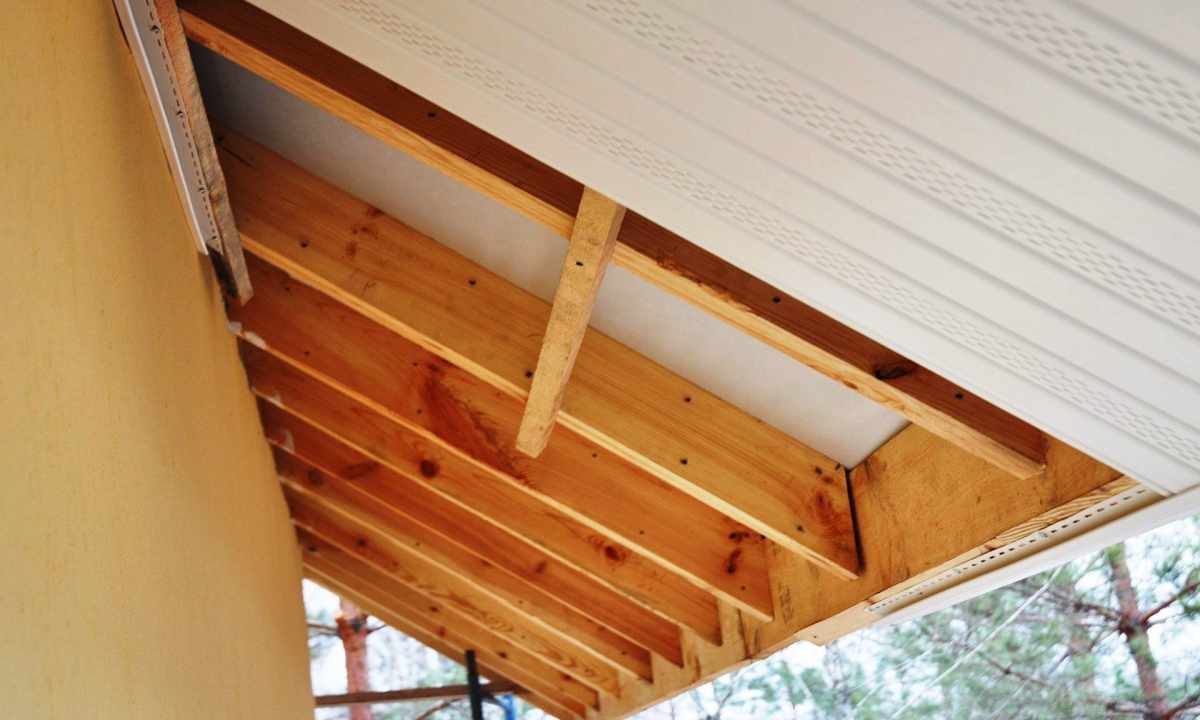After construction of roof structure and flooring of covering it is a high time to be engaged in covering of eaves (box). From as well as what material will sheathe roof overhangs, the view of all house and quality of ventilation of subroofing space in many respects depends.
It is required to you
- - lining or eaves board;
- - metal corners and plates;
- - screw driver;
- - screws;
- - hacksaw;
- - rope.
Instruction
1. It is necessary to make preparation for eaves covering at furring flooring stage, after mounting of rafters. Saw off their ends precisely to one line which has to go parallel to house wall. If width of box which is sheathed by boards parallel to wall differs on its ends, it will spoil exterior of all upper part of the building.
2. Usually rafters are sawn off vertically, and edge part is sewn up like box. Later has drunk rafters concerning the created line the first sheet OSB or wooden board of furring is laid.
3. You make external warming of walls of the house before filing of overhangs of roof. It especially concerns box which is sewn up horizontally, but not on direct rafters. Otherwise the upper part of wall will remain not warmed, and it is necessary to tear off board beside wall to enclose there heater. However in this case warming will be made poor that will lead to considerable heatlosses. Therefore you approach covering already warmed wall.
4. Choosing wooden lining for filing, pay attention to its quality. It is very important as, being on the street, it will be constantly exposed to vagaries of the weather. Material has to be neither too dry and nor very damp. It is the best of all to choose lining which was stored not less than a month in the open air.
5. Preferring eaves board from 1.5 to 2 cm thick for covering, you will provide uniformity of penetration of air on roof perimeter that will serve for ventilation of subroofing space: the gap between boards when tamping makes 1-1.5 cm. And when using lining through each 1.5 m it is necessary to cut ventilating grates. It is also possible to apply plastic or other material by what the house is trimmed.
6. Two bases of design of filing are most widespread. The first option – filing under the same corner under what the roof slope, i.e. directly on rafters is executed. It is the most suitable for roof with small bias. The eaves board or lining are filled in this case directly on rafters, parallel to wall. It is important that the bottom of rafters formed the equal plane.
7. To level it, sideways rafters fasten on screws pieces of boards not less than 10 cm wide and not less than 4 cm thick. Having exposed and having fastened the first and last board, pull thread and fasten all other pieces. In case two slopes of roof agree on corners, fix boards to angular rafter on both sides.
8. The second option – creation of horizontal box from edge of rafters to wall. Execute framework for filing of the chosen material from thick board. Attach one edge to the lower part of rafters, another – to additional board which fastens on the place of approach of rafters to wall. On corners where roof slopes to each other approach, put board flatwise, but not on edge. The joint has to pass from corner in which two walls meet, to corner where two slopes of roof meet. The rigid construction not dependent on wall will be so formed. For fastenings it is the best of all to use metal corners and plates.
9. That the board or lining used at covering reliably kept, twist two or three screws in each place of fastening. Wood materials have to be processed from two parties by anti-septic tank. At first carry out their processing before nailing down, and then - after mounting. Do not forget to establish when tamping lining in box ventilating grates.

